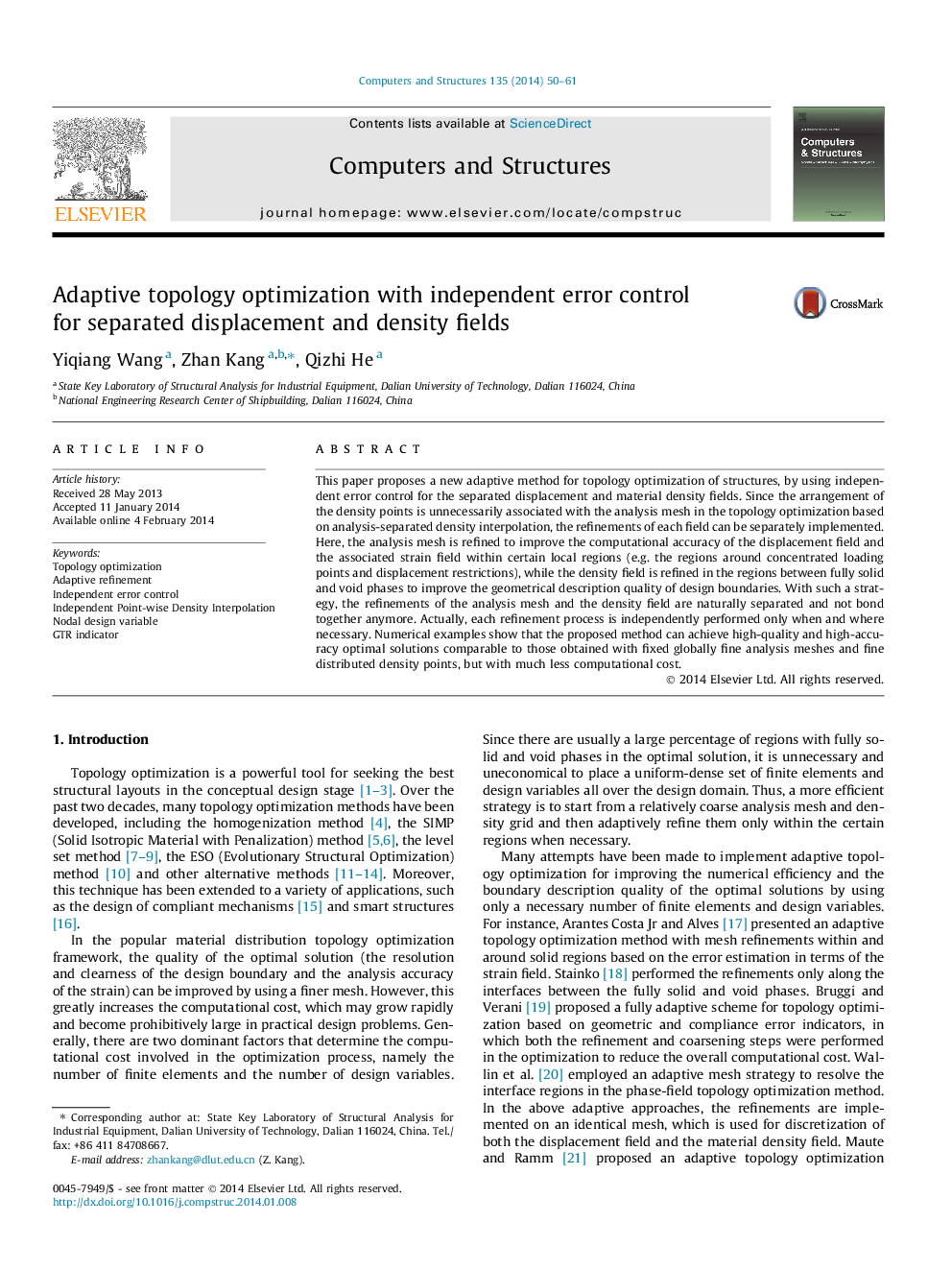| Article ID | Journal | Published Year | Pages | File Type |
|---|---|---|---|---|
| 509788 | Computers & Structures | 2014 | 12 Pages |
•A new adaptive refinement strategy for topology optimization is proposed.•Independent error controls applied to separated displacement and density fields.•Analysis mesh is refined to improve computational accuracy within local regions.•Density field is refined to improve boundary description quality.•High-accuracy and high-quality solutions at less cost than fixed mesh approach.
This paper proposes a new adaptive method for topology optimization of structures, by using independent error control for the separated displacement and material density fields. Since the arrangement of the density points is unnecessarily associated with the analysis mesh in the topology optimization based on analysis-separated density interpolation, the refinements of each field can be separately implemented. Here, the analysis mesh is refined to improve the computational accuracy of the displacement field and the associated strain field within certain local regions (e.g. the regions around concentrated loading points and displacement restrictions), while the density field is refined in the regions between fully solid and void phases to improve the geometrical description quality of design boundaries. With such a strategy, the refinements of the analysis mesh and the density field are naturally separated and not bond together anymore. Actually, each refinement process is independently performed only when and where necessary. Numerical examples show that the proposed method can achieve high-quality and high-accuracy optimal solutions comparable to those obtained with fixed globally fine analysis meshes and fine distributed density points, but with much less computational cost.
